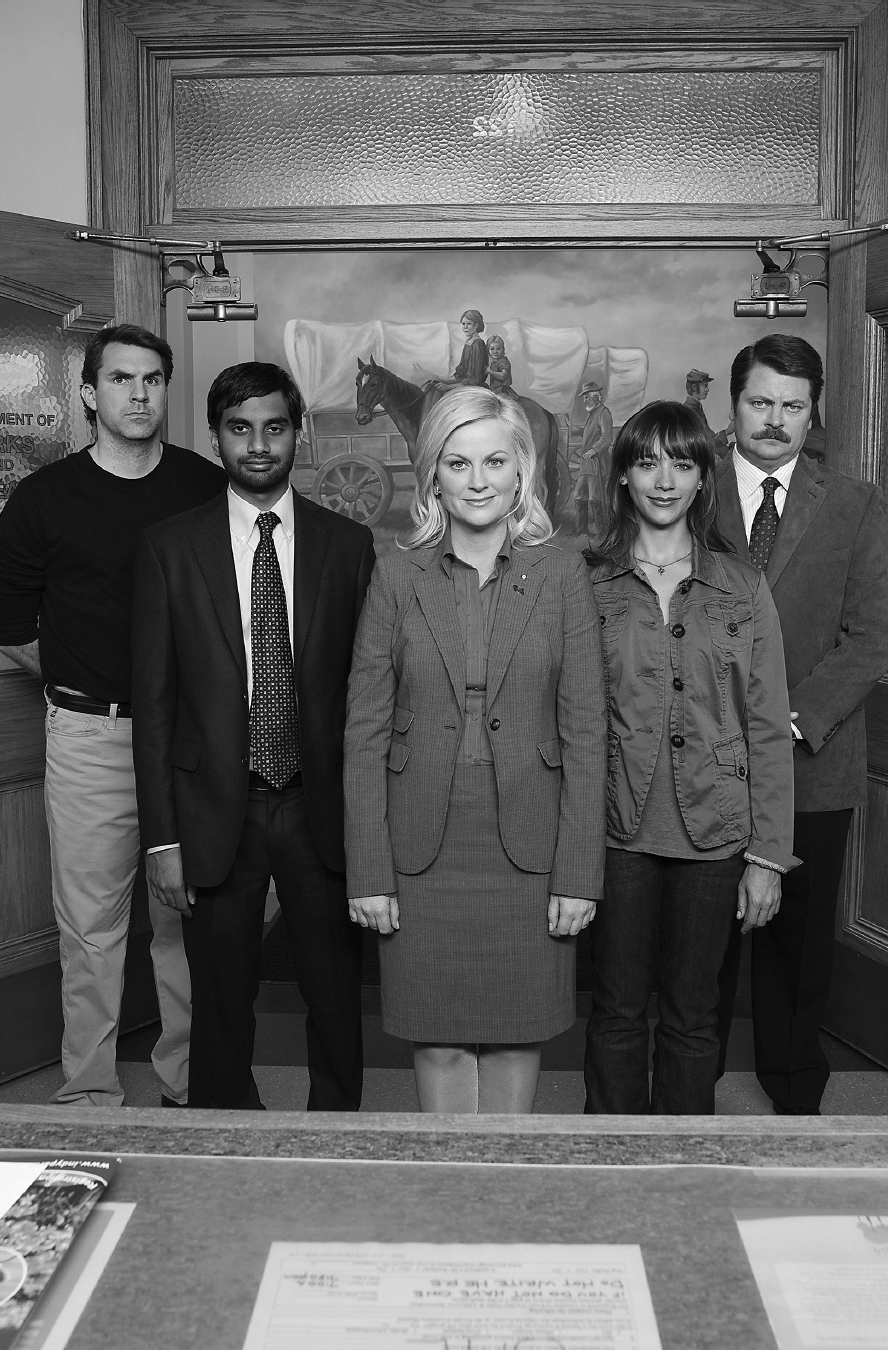10 Leadership and Decision Making in Groups
10 Leadership and Decision Making in Groups
Page 211

IN CHAPTER 10
Understanding Group Leadership
Culture and Group Leadership
Decision Making in Groups
Leadership in Meetings
Evaluating Group Performance
 Look for LearningCurve throughout the chapter to help you review.
Look for LearningCurve throughout the chapter to help you review.
bedfordstmartins.com/commandyou
Parks and Recreation’s Leslie Knope loves her job. As deputy director of the Department of Parks and Recreation in the small town of Pawnee, Indiana, she is a committed public servant who is quite simply thrilled to be a part of local government. And while she may seem naive or even delusional (she describes the citizens who scream at her during town meetings as “people caring loudly at [her]”), she is, in fact, an effective and essential leader.
The people she works with are decidedly less enthusiastic. Her boss, Ron, believes that the government should “do as little as possible,” and once hired an assistant, April, to thwart any work that comes his way. (Want a meeting with Ron? April will happily pencil you in for Marchtember Oneteenth.) Colleague Tom seems preoccupied with the clothing–rental business he runs on the side.
But Leslie is always focused on her goals, whether it’s building a park where there once was a pit or reviving the town’s long-forgotten Harvest Festival. She also has a well-earned reputation for being kind, honest, and ethical, which proves to be an asset: when Leslie asks the Pawnee Police Department to provide security at the festival on a volunteer basis, the chief agrees, no questions asked. “Leslie Knope gets as many favors as she needs,” he says, “because she’s the kind of person who uses favors to help other people.”
CHAPTER OUTCOMES
After you have finished reading this chapter, you will be able to
Describe the types of power that effective leaders employ.
Describe how leadership styles should be adapted to the situation.
Identify how culture affects appropriate leadership behavior.
List the forces that shape a group’s decisions.
Explain the six-step group-decision process.
List behaviors to improve effective leadership in meetings.
Demonstrate three aspects of assessing group performance.
What makes a leader? Skills? Character? Power? An ability to make decisions? And is it possible for groups to exist, if not thrive, without someone like Leslie Knope taking on an effective and inspiring leadership role? In this chapter, we continue our discussion of group communication by examining two additional processes that often emerge in groups: leading and decision making. These two processes are tightly interrelated: a group’s leader affects how the group makes decisions, and the decisions a group makes affect how the leader operates. When leadership and decision making work together in a constructive way, a group stands the best possible chance of achieving its goals. To understand how these processes influence a group’s effectiveness, let’s begin by taking a closer look at group leadership.